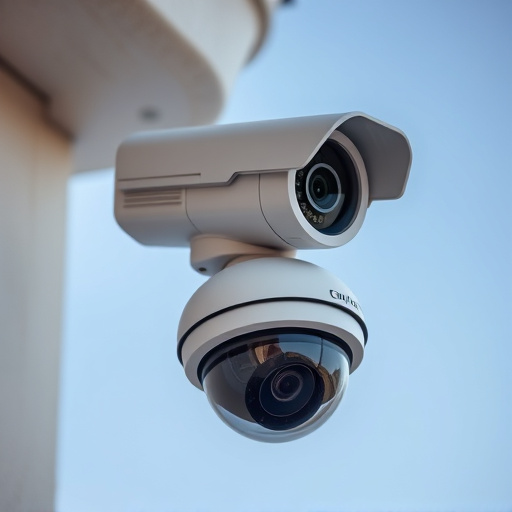Shoplifting is influenced by psychological factors, making fake CCTV cameras a powerful deterrent. These decoys mislead would-be thieves by mimicking real security equipment, altering their perception of risk and encouraging conformity. Strategically placed, high-quality fake cameras significantly reduce theft incidents, especially in retail settings with valuable inventory. Businesses achieve substantial success rates, with one electronics retailer seeing a 30% drop in theft after installation, proving the effectiveness of this visual deterrent strategy.
Convincing decoy cameras are emerging as a powerful tool in the fight against shoplifting. By imitating real surveillance, these fake CCTV cameras mislead and deter thieves, tapping into psychological instincts that drive stealthy behavior. This article delves into the psychology behind shoplifting, explains how decoy cameras operate, explores their effectiveness, and provides implementation tips backed by real-world success stories. Uncover why fake CCTV cameras are proving to be an increasingly effective deterrent for theft.
- Understanding the Psychology Behind Shoplifting
- How Decoy Cameras Mislead and Deter Thieves
- Factors Affecting the Effectiveness of Fake CCTV Cameras
- Real-World Success Stories and Implementation Tips
Understanding the Psychology Behind Shoplifting
Shoplifting is a complex behavior that isn’t just about the value of the item stolen, but also driven by psychological factors. Understanding these motivations can help retailers implement effective security measures. The act of shoplifting often stems from a sense of excitement or thrill-seeking, where individuals perceive the risk as worth the potential reward. It can be an impulsive decision, especially in environments that offer easy access to merchandise and minimal deterrents.
Decoys like fake CCTV cameras play a significant role in altering this behavior by manipulating the perception of risk. Their effectiveness lies in the way they create an atmosphere of surveillance, making would-be thieves think twice before committing the act. This psychological nudge towards conformity with societal norms and fear of consequences can significantly deter shoplifting, ensuring a safer shopping environment for everyone.
How Decoy Cameras Mislead and Deter Thieves
Decoy cameras, also known as fake CCTV cameras, are an innovative and effective deterrent against theft. These devices mimic real security equipment, but they don’t capture any footage or transmit signals to a central system. This simplicity is their power; potential thieves are led to believe that they’re being watched by high-tech surveillance, deterring them from targeting the area. The psychological impact of seeing these fake cameras can be significant, as criminals often look for easy opportunities and avoid locations with apparent security measures.
The deterrent effect isn’t just about the visual presence; it’s also about the perception of risk. Knowing that their actions might be recorded, even if the footage is useless, can discourage thieves from attempting a heist. This misdirection strategy has proven effective in various settings, from retail stores to residential neighborhoods. The fake CCTV camera serves as a powerful visual cue, making would-be criminals think twice before acting on their intentions, thereby enhancing overall security.
Factors Affecting the Effectiveness of Fake CCTV Cameras
The effectiveness of fake CCTV cameras as a deterrent for theft is influenced by several key factors. One of the most important is the camera’s visual realism; it must closely resemble genuine surveillance equipment to convey a credible threat to potential thieves. The quality of the imitation, including the design, lighting, and movement, plays a significant role in convincing passersby that actual CCTV cameras are in operation.
Another crucial factor is the strategic placement of these decoy cameras. Positioning them in visible areas where goods or valuable assets are located can significantly enhance their deterrent effect. Additionally, combining fake cameras with real ones can create a more comprehensive security perception, further discouraging criminal activity.
Real-World Success Stories and Implementation Tips
Real-World Success Stories and Implementation Tips
In numerous real-world scenarios, decoy cameras have proven to be highly effective deterrents against theft. Retail stores, especially those with high-value inventory, have witnessed significant reductions in shoplifting incidents since adopting these innovative security measures. For instance, a major electronics retailer reported a 30% decrease in theft rates after installing fake CCTV cameras alongside their actual surveillance systems. Similarly, jewelry stores have seen success, with one boutique attributing a 25% drop in inventory losses to the strategic placement of decoy cameras.
When implementing this security strategy, several tips can enhance its effectiveness. First, vary the types and placements of decoy cameras to mimic genuine surveillance equipment. Second, ensure the fake cameras are lifelike and positioned in areas visible to potential thieves, such as entry points and high-risk zones. Third, maintain a balance between real and decoy cameras to create an authentic security network. Lastly, combine this tactic with other security measures like alarm systems and staff training for optimal deterrent effect. The Fake CCTV Camera Deterrent Effectiveness has been well-documented, offering businesses a powerful tool in the ongoing battle against theft.
Decoy cameras, or fake CCTV cameras, have proven to be an effective deterrent for shoplifters. By strategically placing these convincing visual aids, businesses can mislead and discourage potential thieves. The psychological impact of believing they’re under constant surveillance significantly reduces the likelihood of illegal activities. While their effectiveness depends on various factors, real-world success stories demonstrate their value as a cost-efficient security solution. When implemented correctly, fake CCTV cameras can be a game-changer in preventing theft, offering businesses a simple yet powerful tool to protect their merchandise.
